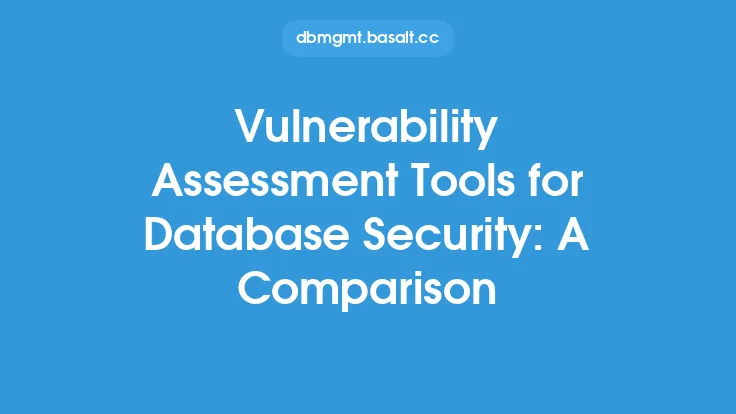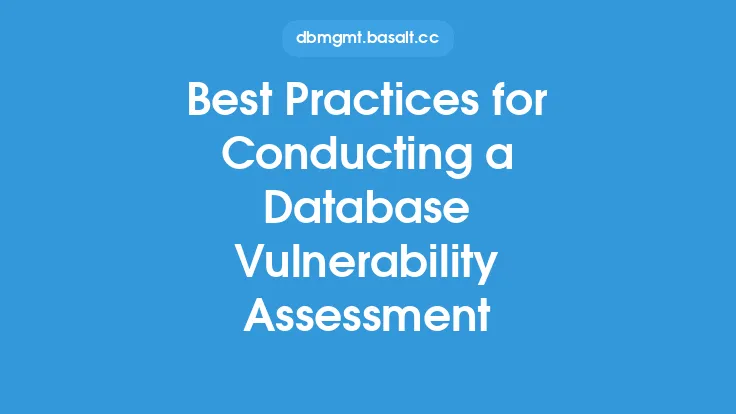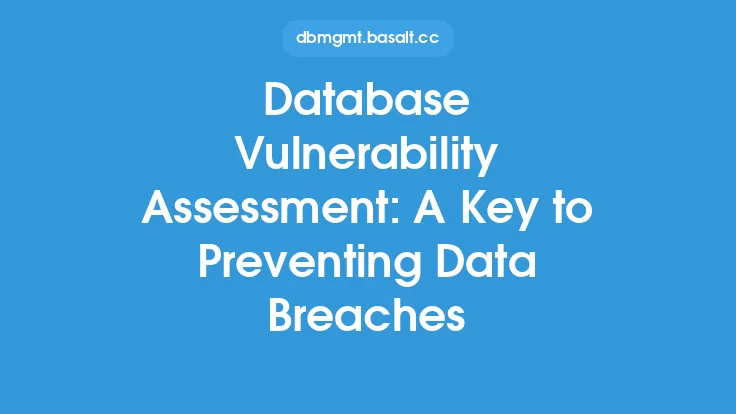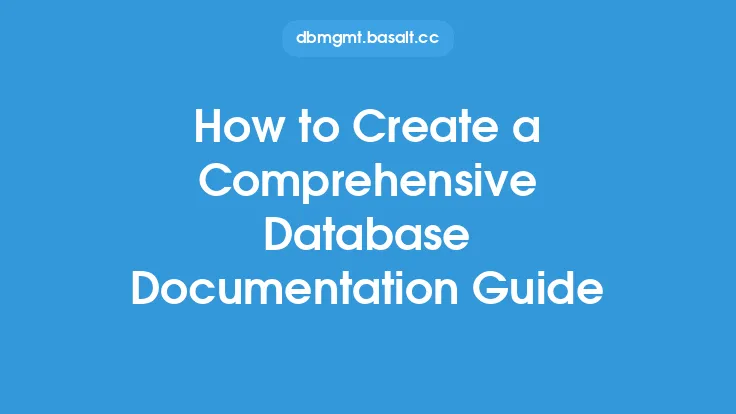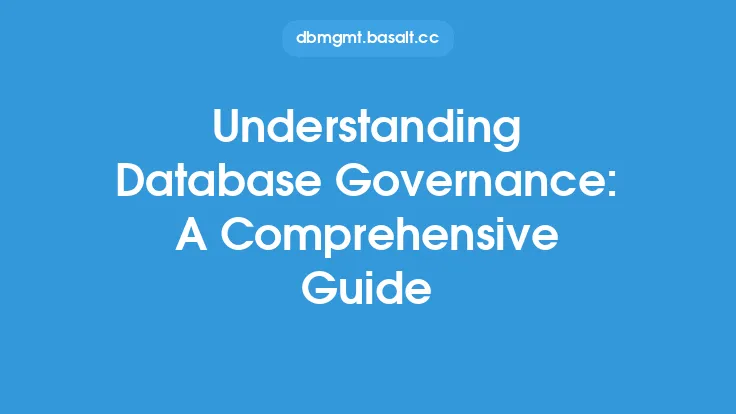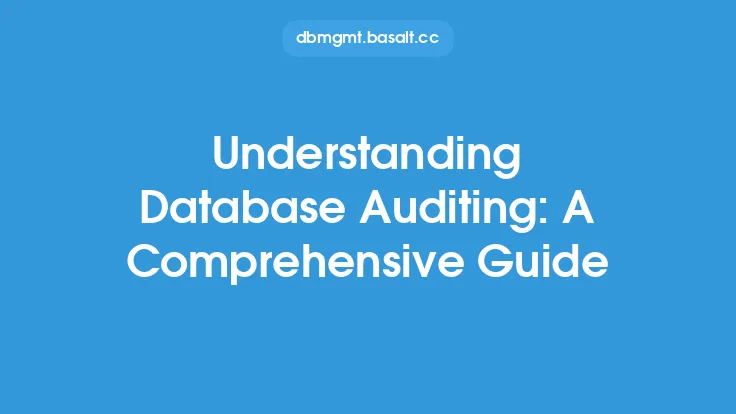Database vulnerability assessment is a critical component of database security, as it helps identify and remediate potential security risks that could compromise the integrity, confidentiality, and availability of an organization's data. A database vulnerability assessment is a systematic process that involves identifying, classifying, and prioritizing vulnerabilities in a database management system (DBMS), as well as providing recommendations for remediation. In this article, we will delve into the world of database vulnerability assessment, exploring its importance, key concepts, and technical aspects.
Introduction to Database Vulnerability Assessment
A database vulnerability assessment is a thorough examination of a database management system to identify potential security weaknesses that could be exploited by attackers. This process involves analyzing the database's configuration, patch levels, user privileges, and other security-related settings to determine its overall security posture. The goal of a database vulnerability assessment is to identify vulnerabilities that could be used to gain unauthorized access to sensitive data, disrupt database operations, or compromise the integrity of the data.
Key Concepts in Database Vulnerability Assessment
Several key concepts are essential to understanding database vulnerability assessment. These include:
- Vulnerability: A vulnerability is a weakness or flaw in a database management system that could be exploited by an attacker to gain unauthorized access or disrupt database operations.
- Risk: Risk refers to the potential impact of a vulnerability being exploited, taking into account the likelihood of exploitation and the potential consequences.
- Threat: A threat is a potential occurrence that could exploit a vulnerability, such as a malicious attack or a natural disaster.
- Asset: An asset refers to the data, systems, or resources that are being protected, such as sensitive customer information or financial data.
- Control: A control is a measure or countermeasure implemented to mitigate or remediate a vulnerability, such as a patch, firewall rule, or access control list.
Phases of a Database Vulnerability Assessment
A database vulnerability assessment typically involves several phases, including:
- Planning and preparation: This phase involves defining the scope of the assessment, identifying the databases to be assessed, and gathering necessary information and resources.
- Data collection: During this phase, data is collected about the database management system, including configuration settings, patch levels, user privileges, and other security-related information.
- Vulnerability identification: This phase involves analyzing the collected data to identify potential vulnerabilities, using tools such as vulnerability scanners and manual analysis techniques.
- Risk analysis: In this phase, the identified vulnerabilities are analyzed to determine their potential risk, taking into account the likelihood of exploitation and potential consequences.
- Remediation: This phase involves providing recommendations for remediation, such as applying patches, modifying configuration settings, or implementing additional security controls.
- Verification: The final phase involves verifying that the recommended remediation measures have been implemented and are effective in mitigating the identified vulnerabilities.
Technical Aspects of Database Vulnerability Assessment
From a technical perspective, database vulnerability assessment involves analyzing various aspects of a database management system, including:
- Network configuration: This includes analyzing firewall rules, network protocols, and other network-related settings to ensure that the database is properly isolated and protected.
- Database configuration: This involves analyzing database settings, such as authentication modes, encryption settings, and access control lists, to ensure that they are properly configured and secure.
- Patch levels: This involves checking the database management system for missing patches or updates, which could leave it vulnerable to known exploits.
- User privileges: This involves analyzing user accounts and privileges to ensure that they are properly configured and that users have only the necessary privileges to perform their jobs.
- Data encryption: This involves analyzing data encryption settings to ensure that sensitive data is properly encrypted, both in transit and at rest.
Tools and Techniques for Database Vulnerability Assessment
Several tools and techniques are available to support database vulnerability assessment, including:
- Vulnerability scanners: These tools automatically scan a database management system for known vulnerabilities and provide a report of the findings.
- Penetration testing: This involves simulating a malicious attack on the database to test its defenses and identify potential vulnerabilities.
- Configuration analysis: This involves manually analyzing database configuration settings to identify potential security weaknesses.
- Log analysis: This involves analyzing database logs to identify potential security incidents or suspicious activity.
Benefits of Database Vulnerability Assessment
Regular database vulnerability assessments offer several benefits, including:
- Improved security posture: By identifying and remediating vulnerabilities, organizations can improve their overall security posture and reduce the risk of a security breach.
- Compliance: Database vulnerability assessments can help organizations comply with regulatory requirements and industry standards, such as PCI-DSS and HIPAA.
- Reduced risk: By identifying and remediating vulnerabilities, organizations can reduce the risk of a security breach and minimize the potential impact of a breach.
- Cost savings: Regular database vulnerability assessments can help organizations avoid the costs associated with a security breach, such as notification and remediation costs.
Conclusion
In conclusion, database vulnerability assessment is a critical component of database security, as it helps identify and remediate potential security risks that could compromise the integrity, confidentiality, and availability of an organization's data. By understanding the key concepts, phases, and technical aspects of database vulnerability assessment, organizations can improve their overall security posture and reduce the risk of a security breach. Regular database vulnerability assessments can help organizations comply with regulatory requirements, reduce risk, and avoid the costs associated with a security breach.
